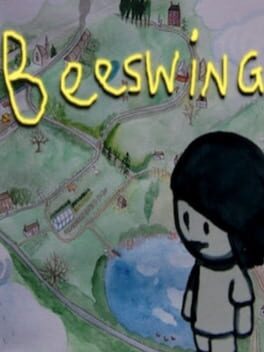3questionmarks
2014
beeswing works how i think memory would work without all the things we collect in our heads to cloud it up. i would explain it as all the parts of (jack king spooner’s) life all stuffed into one thing/space, a bunch of thought-time-ghosts given form. things and places are representations of physical sensory recollection but also emblems of certain aspects of the world, certain ways of being: so much is communicated through these short monologues, these bits of flavor text, these snatches of first-person anecdote, banging around with all the other communications of everyone you’ve spoken to in the gameworld.
there’s a lot to say formally about the audiovisual part (janky edges like the point where the memory cuts off, soft watercolors and bristly pencil scratch, how naturally it blends from space to space while bridging impossible gaps) but i really like the parts where it does something totally out of left field, like the claymation part: these moments of visual shock remind me of the extraordinary nature of things and places, the power packed in the most quotidian gestures.
i really admire the sort of stoic approach to depicting the act of living from all these different angles, obviously there’s an agenda because it’s art made by a person, explicitly framed from that person’s perspective, but it’s polyphonic in a way very little art is, it often barely feels like an art-object because there’s so much respect for the testimony and autonomy of the people/things/places around you. and the game is a remarkable testimony itself, a conversation with a fascinating stranger: there’s a constant sense of “these things happened” “he was here” “now i have been here”. it’s earnest in a way artists rarely allow themselves to be without turning it into a performance of earnestness. he lays what he’s seen, heard, felt on the table and lets you take what you like.
there’s a lot to say formally about the audiovisual part (janky edges like the point where the memory cuts off, soft watercolors and bristly pencil scratch, how naturally it blends from space to space while bridging impossible gaps) but i really like the parts where it does something totally out of left field, like the claymation part: these moments of visual shock remind me of the extraordinary nature of things and places, the power packed in the most quotidian gestures.
i really admire the sort of stoic approach to depicting the act of living from all these different angles, obviously there’s an agenda because it’s art made by a person, explicitly framed from that person’s perspective, but it’s polyphonic in a way very little art is, it often barely feels like an art-object because there’s so much respect for the testimony and autonomy of the people/things/places around you. and the game is a remarkable testimony itself, a conversation with a fascinating stranger: there’s a constant sense of “these things happened” “he was here” “now i have been here”. it’s earnest in a way artists rarely allow themselves to be without turning it into a performance of earnestness. he lays what he’s seen, heard, felt on the table and lets you take what you like.
